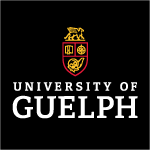Scientific Title: Exploration of Nanoparticle-Enabled Image Guided Photoablation in Veterinary Patients
Study Investigator: Dr. Michelle Oblak

What are Porphysomes?
PORPHYSOMES are a novel nanomedicine developed by Dr Gang Zheng (University Health Network, Toronto). This nanomedicine is delivered through a catheter in the vein and concentrate in areas with tumour cells (either primary or metastatic). PORPHYSOMES can be used to highlight the tumour by using a specialized camera and light called near-infrared fluorescence (NIRF). This allows for image-guided surgery, tumour margin assessment and lymph node staging. PORPHYSOMES can also be used to deliver treatment directly to the tumour and/or kill any cells remaining after surgery using photoablation – photodynamic therapy (PDT).
Purpose of the Clinical Study
For veterinary patients, surgery is the primary treatment for many tumour types. Challenges can include tumours that are too large to safely remove or metastatic disease (spread) that cannot be removed. The purpose of this study is to evaluate the potential applications of PORPHYSOMES and PDT in veterinary clinical patients. PORPHYSOME-enabled therapies can have an immediate impact on cancer management providing better patient outcomes. This is a translational therapeutic, meaning that the information gained from this research will be used to treat future dogs, cats and humans. A human clinical trial with PORPHYSOMES is planned for early 2023.
Is Your Pet Eligible?
Dogs ≤ 60kg, with a confirmed oral tumour (any type) and interested in pursuing CT and surgery will be eligible for this study.
Exclusion Criteria: Dogs with oral tumours than have extensive bone invasion, a previous history of lipid-based drugs, liver dysfunction or hypersensitivity to iodine, previous treatment for oral tumour and/or active disease unrelated to the tumour will not be eligible to participate in this study.
Financial Incentives
Clients are responsible for staging costs prior to study enrollment (at OVC or other clinic). Costs associated with the study including consultation, PDT/surgery, patient care and tissue analysis will be covered. Postoperative treatment, if elected, are not included in this study.
This work is generously supported by funds from Canadian Cancer Society.

Visits / Samples Required
- Following routine staging and confirmation of an oral tumour either by your veterinarian or at OVC, you will have a virtual or telephone consult with a member of the research team. If your dog is eligible and you would like to participate, a study appointment will be booked.
- When your dog arrives to the hospital for its appointment, a baseline blood sample will be collected and standard complete blood count and serum biochemistry completed. In your dog’s arm, a catheter will be placed providing intravenous access and we will start the slow infusion of PORPHYSOMES. If your dog is anxious, mild sedation may be required.
During and following the infusion, careful monitoring will be performed by the research team which includes a veterinary technician. A blood sample will be collected following the infusion. Depending on you and your dog, we may discharge your dog until the next procedure or they can stay overnight in the hospital. - Either 24 or 48 hours following the infusion, another blood sample will be collected and your dog will have a computed tomography (CT) scan under general anesthesia (if not already completed as part of staging).
After the CT, PDT will be performed. Using ultrasound guidance, small laser fibres will be inserted in or around the tumour. Once the laser is turned on, the PDT will take about ~20 minutes, depending on the size of the tumour.
On recovery from anesthesia, your dog will remain in the hospital until surgery. - Following PDT (24-48 hours), another blood sample will be collected and a CT scan performed under general anesthesia to assess for changes within the tumour.
ARM 1: under the same anesthesia, your dog will have standard of care surgery to remove the oral tumour +/- underlying bone (mandibulectomy). The surgeon may also choose to remove neighboring lymph nodes that may be suspicious for metastases (lymphadenectomy). Removed tissues will be sent to the laboratory for further analyses including disease confirmation via histopathology.
ARM 2 (monotherapy): surgery will not be performed. Your dog will recover from anesthesia and be discharged to your care. - ARM 1: Your dog will recover under careful monitoring and have additional blood samples collected for the study.
Approximately 24-48 hours after surgery, the standard timeline for postoperative oral tumour patients, your dog will be discharged from the hospital. Postoperative care instructions and any necessary medications will be provided to you by your dog’s clinician. - A follow up appointment will be booked at OVC 10-14 days after surgery for a final blood sample collection and to remove your dog’s sutures.
Up to 3 years, the research team may check in with you or your veterinarian to follow up on your dog’s overall health.
Results of this study including any publications and/or updates on human clinical trials will be provided to you, if interested.


